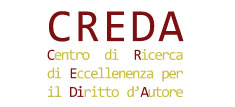L'Autorità Garante della Concorrenza e del Mercato, in data 26 luglio, ha autorizzato con condizioni…
The JCEU on the assessment of the likelihood of confusion between Arabic words which are visually similar, but different in pronunciation and concept
di Matteo Aiosa (via Iplens.org)
On March 28, 2014, the Brussels Court of Appeal lodged a request for a preliminary ruling by the Court of Justice of the European Union (Case C-147/14, full text here). The reference was made in the course of a proceedings concerning the infringement of the two Community trademarks “EL-BENNA” and “E-BNINA”, registered by the Management Loutfi Propriété intellectuelle SARL (“Loutfi”) for goods in Class 29, 30, 32, from the Benelux trademark “EL-BAINA”, filed by the AMJ Meatproducts NV (“Meatproducts”) for goods in Class 29 and 30. The Court of Appeal held that both Loutfi’s and Meatproducts’ trademarks were registered for goods (halal products) that were identical or at least similar, and that the relevant public for assessing the likelihood confusion was the normal Muslim consumer of halal food in the EU, who had at least a basic knowledge of Arabic. Furthermore, comparing the marks orally and conceptually, the Court determined that the words EL BENNA, EL BNINA and EL BAINA did not have a meaning in one of the official languages of the European Union, and all of them had different meanings and pronunciations in the Arabic language.
On the basis of that, the Court asked CJEU if the Article 9 (1)(b) of CTMR must be interpreted as meaning that, in the assessment of the likelihood of confusion between a Community trade mark in which an Arabic word is dominant and a sign in which a different, but visually similar, Arabic word is dominant, the difference in pronunciation and meaning between those words may, or even must, be examined and taken into account by the competent courts of the Member States, even though Arabic is not an official language of the European Union or of the Member States. The CJEU (Tenth Chamber), with the decision of 25 June 2015, ruled that: “Article 9(1)(b) of Council Regulation (EC) No 207/2009 of 26 February 2009 on the Community trade mark must be interpreted as meaning that, in order to assess the likelihood of confusion that may exist between a Community trade mark and a sign which cover identical or similar goods and which both contain a dominant Arabic word in Latin and Arabic script, those words being visually similar, in circumstances where the relevant public for the Community trade mark and for the sign at issue has a basic knowledge of written Arabic, the meaning and pronunciation of those words must be taken into account”.
It might seem absurd that for the Community trade mark the relevant public does not necessarily coincide with the ethnic belonging to a Member State of the European Union. However, the decision of the CJEU is consistent with its previous guidance, both in the identification of the relevant public, i.e. the Muslim as “the average consumer of the category of products concerned (which) is deemed to be reasonably well-informed and reasonably observant and circumspect” (CJEU 22 June 1999, case C-342/97, Lloyd/Klijsen; Lloyd/Loint’s), and in the global appreciation of the likelihood, having taken “into account all factors relevant to the circumstances of the case” (CJEU 11 November 1997, case C-251/95, Puma/Sabel).
Court of Justice, Tenth Chamber, 25 June 2015, C-147/14, Loutfi Management Propriété intellectuelle SARL.v AMJ Meatproducts NV- Halalsupply NV.
20 luglio 2015








